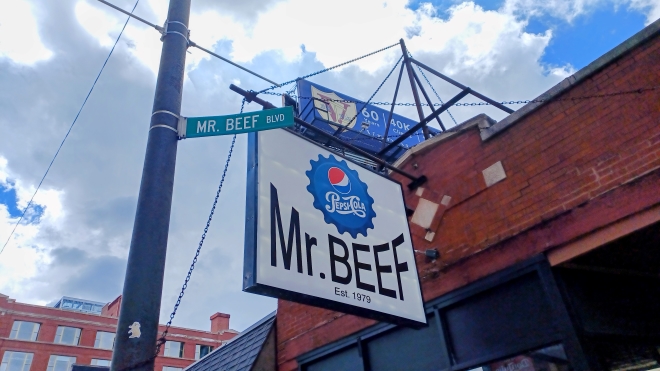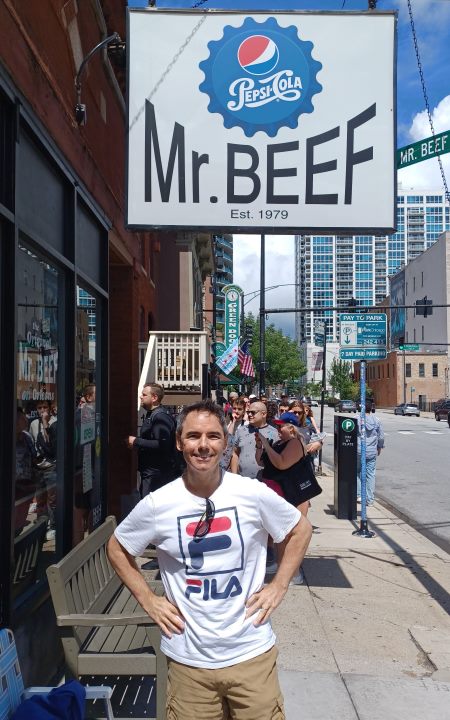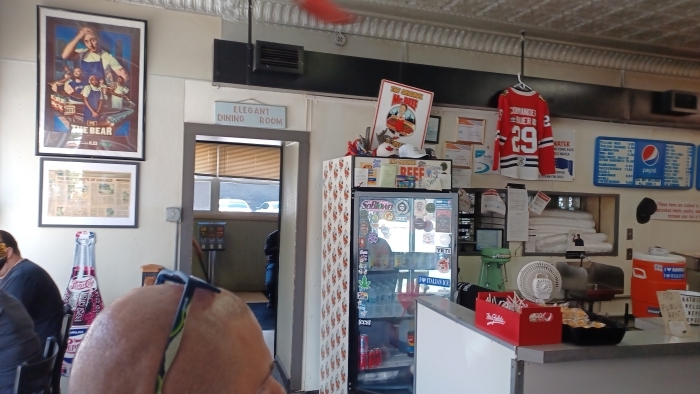The Bear pilot: Script to Screen
My idea of fun is to go back and watch the pilot episodes of my favorite shows. You find so many little moments and Easter Eggs that make you scratch your head and wonder, How did they know to plant that little bit that wouldn’t pay off until Season Five?
Seriously, I’d rather sit home and watch the pilots of all my favorite shows again than actually dine in a Michelin star restaurant. Speaking of fine dining…
I’m been working on my deep analysis of the pilot of The Bear, the half hour Emmys juggernaut written and directed by Christopher Storer. I’ve seen all three seasons of the show, more than once, so when I go back to the pilot I pick up on about a million little things that have greater significance now that I’ve spent more time in this world. It’s pretty much the deal with all great pilots. You watch them and you realize one thing.
It’s all there.
All the key relationships. All the key conflicts. The crux of the protagonist’s internal and external struggle. At least a hint as to their “Achilles Heel” or “wound,” usually connected to their backstory, which will dribble out over time. They will make a crucial decision that will have ramifications for the rest of the series. This might be the final moment of the pilot, the “Trigger” moment, or it could be in the opening scene.
And oh, the wonderful Easter Eggs. There’s always at least one in there. A nod to the show creator’s master plan, if you will. Consider this throwaway moment in the pilot of Breaking Bad, with Walt and his son watching, what else? Scarface.
WALT & WALT JR. Say hello to my little friend!
Oh Vince Gilligan, you brilliant rascal, you.
Or the sound of gunfire in Don Draper’s head in the pilot of Mad Men. (And a shot of his Army medals in his desk drawer?)
In The Bear pilot, we get a bunch of little glimpses of elements that will pay off later…
Carmy notices his concept drawing of his upscale restaurant to be named “The Bear.”
We see closeups of a big hunk of meat being seasoned just as we see shots of Carmy’s brother Michael, alive and happy and then as a body under a sheet in the morgue. We will come to realize this can only be the braciole (you know, the “bra-zhoul”) that he and Michael used to make on Sundays. That is how Carmy learned to cook and how he bonded with his brother. Carmy will tell us about this tradition when he gives the monologue in the Al-Anon meeting in episode 3, and then we will see Michael in action with the braciole in a flashback in episode 6.
Even the tone of the performances links with the text to plant seeds that will later grow into major conflicts. When Richie dresses down Carmy at the end of the pilot, you see Jeremy Allen White’s whole face drop as Ebon Moss-Bachrach says “You don’t know what you want to be.” It’s a bit on the nose as to his arc, but we will come to see how this will feel eerily reminiscent of his former boss, played so menacingly by Joel McHale (who knew?) in key flashbacks to come. A great series explores the core identity of its protagonist, and The Bear is no exception. This story is Carmy’s journey to find out who he truly wants to be, who he can be. Is he an abused underling… a troubled genius… a rock star… or just a screwed-up kid from the old neighborhood? Does he deserve to escape his traumatic upbringing and make something great, or should he just commit to slinging greasy sandwiches for the rest of his life? We’re watching the Carmy Opera. (Il Opera Carmen?)
This is all so beautifully captured in the final scene in the pilot, when we see Carmy throw out the can of tomatoes — an act of defiance against Richie, who had just ordered him to “get back in there and make the fuckin’ spaghetti!” It is a symbolic act that predicts how Carmy will never compromise when it comes to cooking. It’s the Trigger Event that will drive the first season.
It’s also a massive Easter Egg, as we all know how important tomato cans will become by the end of Season One.
THE PILOT SCREENPLAY vs. THE SHOW
In revisiting both the script and the episode, I noticed a number of changes that were made for the aired episode. Here are some of the ways the two differed.
The pilot episode:
- Added Fak’s line about Richie being “just sad,” to deepen Richie’s internal conflict that will deepen over time. And his dislike of Fak, which softens a bit as we continue the show, but not by much.
- Cut Sugar telling Carmy that she got a message from EMP (Eleven Madison Park, the famous restaurant that Carmy excelled at) that he had a meltdown and punched someone? She was his emergency contact, so they called her when this incident went down. Soon after…
- Cut Carmy having a meltdown and throwing a pot full of gravy at the wall, almost hitting Richie.
I’d guess that they cut these last two moments to de-emphasize Carmy’s violent nature. His temper is an aspect of his character, sure, but his characterization goes much deeper — he suffers from extreme anxiety, maybe he’s even somewhere on the Autism spectrum, which we see really come out in the incredible “Fishes” episode in Season Two when he gets very upset when Michael and Richie try to get him to ask out Claire. Michael and Richie are, of course, tone deaf to Carmy’s discomfort, choosing to criticize and mock him rather than try to understand his emotional needs.
- Added some playful banter by the staff at the family table, which adds more color to the ensemble.
- “Tito” became TINA, and she immediately had beef with (sorry) Sydney. Without Tina, the only female characters would have been Sugar and Sydney. What a great addition it became to add this fascinating Latina woman (played so authentically by Liza Colón-Zayas), and, to make her more adversarial with Sydney in the episode than she was in the script.
All great writers know that it’s not enough to just make a change, you should always be upping the conflict and stakes. After all, Drama = Conflict. Tina and Sydney will become allies some day, but not in the beginning. Conflict is always more interesting than kismet, especially in the first act.
Another small change: the script saw Carmy selling his Jordans to swap for the beef in the morning, but the episode switched it to vintage clothing, with the “closer” being a jacket that Michael had given Carmy, which forced Carmy to have to ask Sugar to bring it from her/mom’s house. This change not only tied in more to Michael’s death but it also motivated Sugar’s appearance. And Jordans are just cliché at this point, we see them in tons of shows.
Can’t wait for Season 4 of The Bear. It’s rumored that the wait will be shorter this time, which makes me sleep easier.
By the way, I’m writing this on the eve of a trip to Chicago where I will, hell or high water, visit “Mr. Beef,” the original beef restaurant that inspired creator Chris Storer. He worked at Mr. Beef when he was a kid, and kept in touch with the owner’s son, who still works at the beef shop. I guess the lesson here is a timeless one: write what you know.
Good luck and happy writing
Dan
p.s. We made it to Mr. Beef! It was almost noon, and there was already a HUGE line down the block so we didn’t even bother to join the queue (even just to order a Pepsi or an Italian Ice, which was our plan, because, alas, we are vegan). But I managed to lean in the doorway to grab a couple pics of the interior, which looks EXACTLY like the beef shop in the early episodes of the show. You can’t make out the “Hand-Carved Sandwiches” neon sign in my pic below, but trust me, it was glorious. It was all there. The ancient menu board on the wall behind the cooks with the crooked letters and numbers. The “Elegant Dining Room” sign. The “I ❤️ Italian Ice” bumper sticker. It was too cool, I tells ya. Anyway, here are a few pics of the beef shop from “The Bear” from our Chicago trip in August of 2024.
JOIN THE NEXT STORY MAPS MASTER CLASS








Leave a Reply
Want to join the discussion?Feel free to contribute!